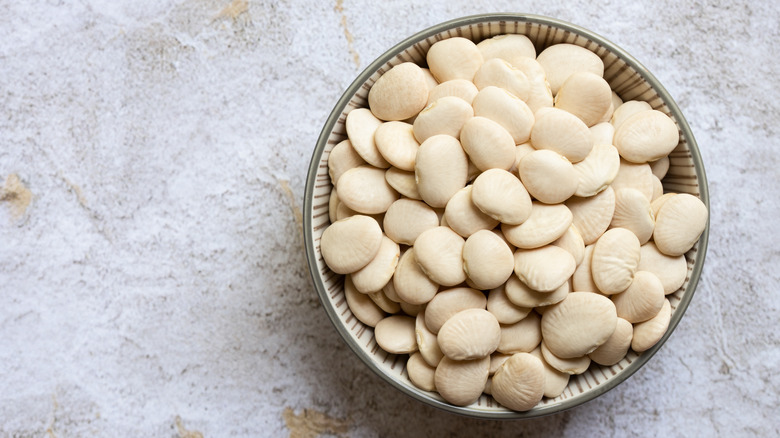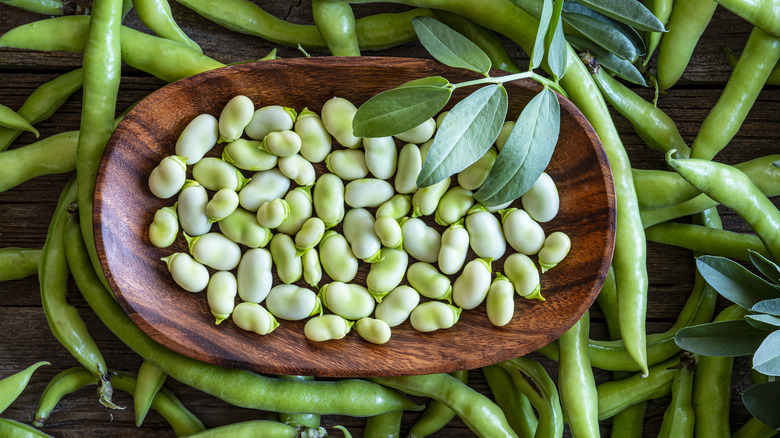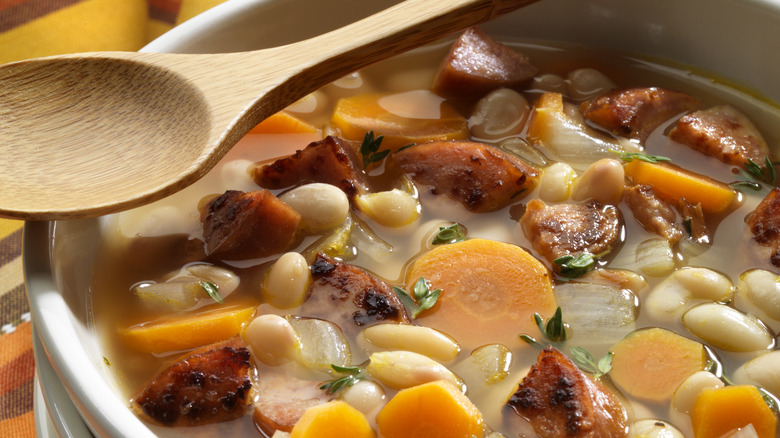What Are Butter Beans? It Depends On Where You Live
You've buttered your biscuits and buttered your bread, but have you ever buttered your beans? Okay, so butter beans aren't actually beans with butter on them, but what exactly are they? Turns out, these white beans might just have a different name depending on where you are in the world.
Butter beans come from the plant Phaseolus lunatus, originally cultivated for its edible seed. The beans hold deep cultural significance throughout the American South, but they actually come from Lima, Peru. That's why they're often known by another name — lima beans.
Many Americans stick with the lima bean moniker, harvesting and eating the beans when they are fresh and green. In parts of the Southern United States, as well as the United Kingdom, the beans are left to mature, then dried or canned and are sold under the name "butter beans." In total, there are over half a dozen names for this bean, but agriculturally speaking, they're all the same legume!
Finding nutritious butter beans
The butter bean is an enduring ingredient filled with dietary fiber. The soluble fiber can help lower cholesterol and regulate blood sugar. Butter beans are nearly fat-free, high-quality protein with loads of potassium and calcium. So if you're a vegetarian looking to add some protein to your diet, you might want to hunt down these guys.
Butter beans are harvested and sold at different levels of maturity, starting with the baby limas. These baby limas are soft with a pale green color and are typically used fresh. Once mature, the beans are thicker, paler, and a bit more starchy. At this stage, they are usually dried after harvesting and are often referred to as large limas. Regardless of the name, you can still reap the health benefits of these legumes no matter what stage of maturity they are in.
You can find butter beans canned, frozen, or dried all year around, but if you're really in the mood for some fresh butter beans, they're harvested in late summer. A word to the wise: according to the OSU Extension Service butter beans, like many beans, can be toxic when consumed raw. If your beans are fresh from the field, boil them for at least 10 minutes before consumption (canned beans are pre-cooked, so you're safe with those).
Cooking with butter beans
Butter beans — also called sieva beans, butter peas, Madagascar beans, chad beans, or gigante beans, or — were a pantry staple in early Mesoamerican and Andean households, and remain so in kitchens around the world. As the name may suggest, butter beans are particularly smooth and creamy. They also hold sauces well and are able to soak up the flavors around them, making them an exceptional addition to rich stews and braises. Butter beans are often used as an absorbent base for soups, paired with a savory cut of pork, or can stand alone with some simple seasonings. Be sure not to let the butter beans cook too long, however, or those velvety beans will turn chalky.
This adaptable legume can be found around the world, in a variety of dishes, and under a number of different names. In Valencia, Spain these beans are called garrofón, a key component of their famous paella. Head to India and look under the name "double beans," then add it to your next curry dish.
In the Southern U.S., butter beans are typically fried up with bacon or ham and plated atop a mound of rice. In South America, they are sometimes served with ceviche, while the Narragansett tribe in Rhode Island uses the bean in their succotash. The humble butter bean is truly a versatile gem, no matter what you decide to call it.



